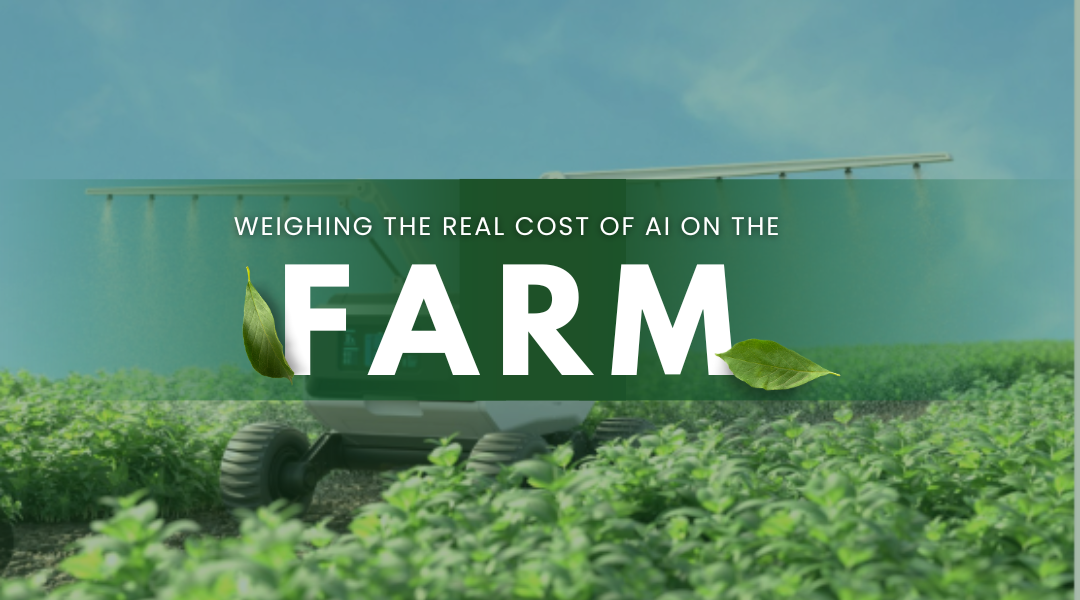The conversation about smart technology in agriculture often gets lost in the buzzwords. But for the farmer standing in a field, it boils down to two stark questions: “Can I afford it?” and “What does it mean for my land and my community?” The journey toward high-tech farming is paved with financial hurdles, deep ethical dilemmas, and a policy landscape that’s still being written.
The Financial Balancing Act: Investment vs. Return
Let’s be blunt: cutting-edge technology doesn’t come cheap. The price tag for an AI-driven sensor system or a fleet of autonomous sprayers can be daunting. For many, the initial investment feels like a massive gamble.
- The Upfront Squeeze: It’s not just the hardware. It’s the subscription fees for the data platforms, the cost of hiring a consultant to make sense of it all, and the upgrades needed to make old tractors talk to new computers. A mid-sized almond grower, for instance, might see a six-figure bill for a comprehensive soil and irrigation monitoring system. The promise of long-term savings can feel abstract when facing that kind of immediate outlay.
- A Shifting Job Market: There’s a real fear that automation will render traditional farmhands obsolete. And while it’s true that some manual jobs may decline, new ones are emerging. The challenge is a skills mismatch. The farm of the future will need more “ag-tech specialists”—people who can troubleshoot a malfunctioning drone, interpret complex soil data, and manage robotic milking systems. The financial question extends to who will pay to retrain the current workforce for these new roles.
- Example in Action: Consider a vineyard that invests in AI-powered optics to scan each grapevine. The system can identify nutrient deficiencies and disease with pinpoint accuracy, potentially saving thousands in lost yield. The ROI isn’t just in the harvest; it’s in the drastic reduction of water and fertilizer use, which saves money and aligns with growing consumer demand for sustainable practices. The financial calculation, therefore, must look beyond simple yield increases to include input savings and market positioning.
The Human and Ethical Landscape: More Than Just Code
Beyond the balance sheet, the integration of AI forces us to confront profound social and ethical questions.
- The Data Dilemma: When a farmer uses a corporate AI platform, they are often handing over their most valuable asset: their data. This includes yield maps, soil health history, and water usage patterns. The ethical concern is paramount: who truly owns this information? Could it be used by the tech company to influence market prices or sold to a land acquisition firm without the farmer’s consent? Trust is the new currency, and it’s in short supply.
- Bridging the Digital Canyon: There’s a real risk of creating a two-tier agricultural system. Large, well-capitalized agribusiness can easily absorb the cost of innovation, reaping the benefits of efficiency and lower production costs. Meanwhile, small, family-run farms may be left behind, unable to compete. This doesn’t just threaten individual businesses; it threatens the fabric of rural communities and regional food diversity.
- Example in Action: Imagine two dairy farms. One, a large corporate operation, uses facial recognition software on its cows to optimize feeding and health, boosting milk output by 20%. The other, a 100-cow family farm, can’t afford the system. When milk prices drop due to the corporate farm’s increased efficiency, the family farm is pushed to the brink. The technology, while innovative, inadvertently accelerates industry consolidation.
Forging a Path Forward: Practical Strategies for a Smart Transition
Overcoming these barriers isn’t about waiting for prices to drop. It requires a proactive, collaborative strategy.
- Creating New Financial Models: Instead of outright purchases, we need to champion “AI-as-a-Service” models. Think of it like a subscription—a smaller, predictable monthly fee for access to the insights without the massive capital expenditure. Cooperatives could also pool resources to purchase and share technology, making it accessible for smaller players.
- Building Real-World Skills: Training programs need to move beyond theoretical seminars and into the field. Community colleges and agricultural extensions should offer hands-on courses in data literacy, drone operation, and tech maintenance, creating a pipeline of local talent ready for modern farm jobs.
- Developing a “Farmer’s Bill of Rights” for Data: Policymakers and industry groups must collaborate to establish clear, unwavering rules. A farmer’s operational data should be their legal property—unlockable, unsellable without explicit permission, and portable if they choose to switch service providers.
- Smart Policy that Incentivizes Responsibility: Governments can use carrots instead of sticks. Tax credits could be offered not just for adopting technology, but for adopting sustainable technologies that demonstrably reduce water waste or chemical use. This aligns financial incentives with ethical environmental outcomes.
Conclusion: Sowing the Seeds of a Balanced Harvest
The future of farming with AI is not a foregone conclusion. It will not be determined solely by the engineers who design the algorithms, but by the choices we make as a society. The goal cannot be a sterile, fully automated landscape devoid of human touch. Nor can it be a nostalgic refusal to embrace tools that can alleviate drudgery and environmental harm.
The most fruitful path forward is a middle ground—one that harnesses the precision of technology while being guided by human wisdom, community values, and a deep respect for the land. It requires financiers to create fair models, educators to build relevant skills, and policymakers to write rules that protect the vulnerable. By getting this balance right, we can cultivate a future where technology doesn’t replace the farmer, but empowers them to become more productive, sustainable, and resilient stewards of our food system.
